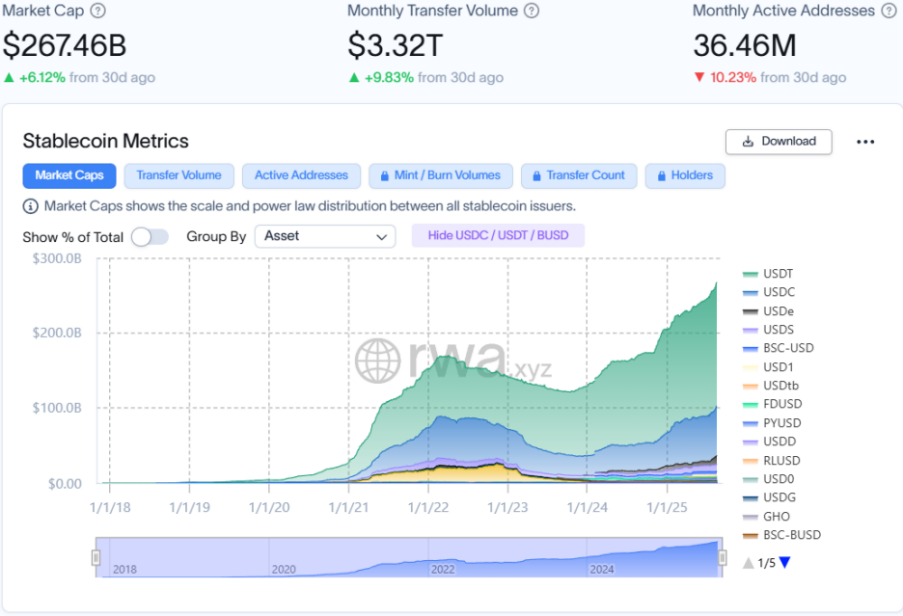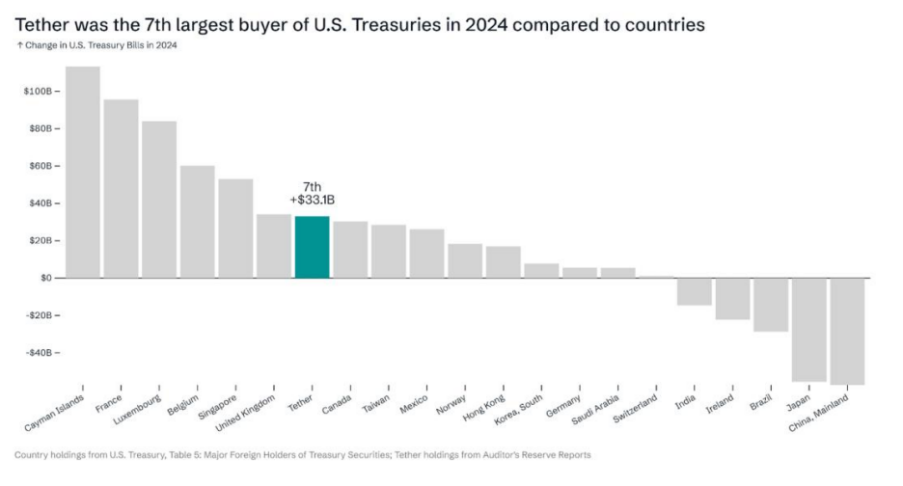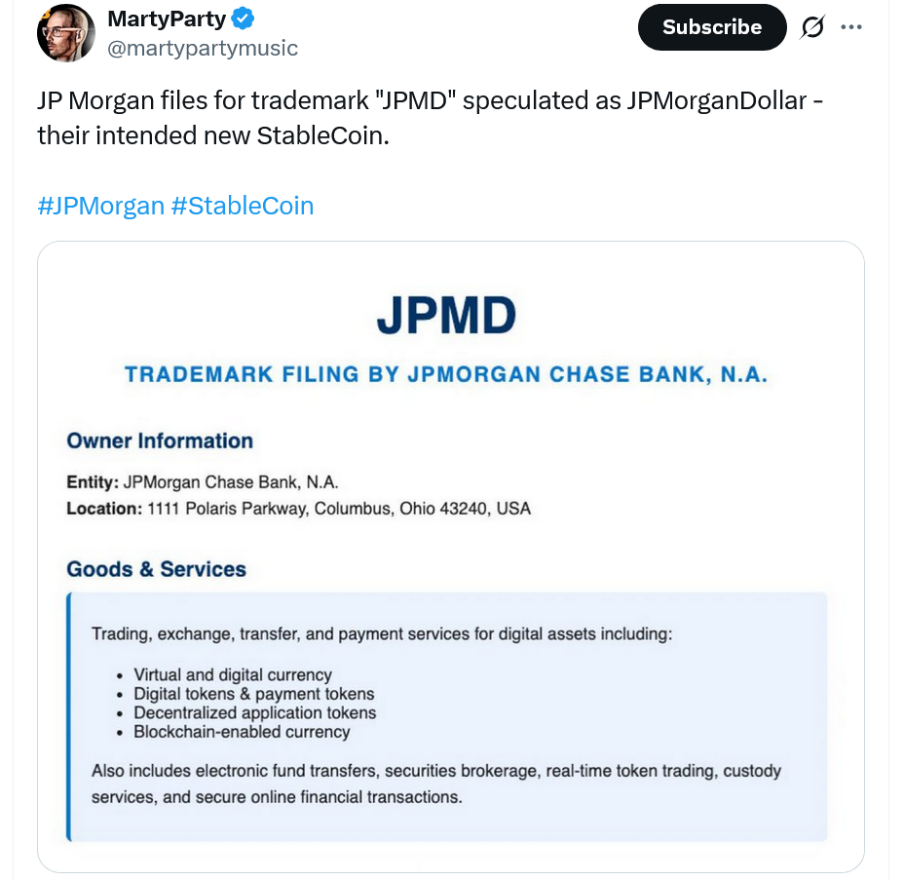Author: J.A.E, PANews
The "Genius Act" has been in effect for less than a month, and an unexpected skirmish has begun in Washington.
On August 16, 52 banks, lobbying groups, and consumer organizations led by the American Bankers Association (ABA) jointly published an open letter to the Senate Banking Committee, publicly calling for amendments to the "Genius Act."
The core demand of the joint action directly targets the special provisions in the "Genius Act," arguing that they pose a threat to the existing financial system in the United States. Behind the joint letter is a multi-party game involving new and old forces surrounding regulatory power, credit models, and sources of profit. The traditional banking sector is concerned that if the "Genius Act" is fully implemented in its current form, it may threaten its core position in the financial industry chain.
Background: The Rise of the Trillion-Dollar Stablecoin Market
The passage of the "Genius Act" coincides with the exponential growth of the stablecoin market. Over the past three years, the stablecoin market has steadily grown, continuously setting new highs. As of August 19, the total size of the stablecoin market approached $267.5 billion. Among them, USDT and USDC account for over 85% of the market share, with market capitalizations exceeding $165 billion and $66 billion, respectively. The highly concentrated market structure makes the influence of Tether and Circle, the two major stablecoin issuers, significant.

Predictions from Standard Chartered Bank and U.S. Treasury Secretary Janet Yellen indicate that under the regulatory framework of the "Genius Act," the stablecoin market is expected to reach $2 trillion by the end of 2028. This anticipated explosive growth suggests that stablecoins are undergoing a transformation from "crypto speculative tools" to "major buyers of U.S. Treasury bonds."
Due to the strict limitations on reserve assets for stablecoins imposed by the "Genius Act," short-term U.S. Treasury bonds, backed by national credit, extremely low default risk, and high liquidity, have become the ideal choice for stablecoin issuers. Tether has become the seventh-largest holder of U.S. Treasury bonds, with holdings exceeding $120 billion, a figure even higher than that of sovereign nations like Germany.

The systemic trend of a large amount of dollar capital being converted into demand for U.S. Treasury bonds has brought a stable new "financial backer" to the U.S. government. This also means that the impact of stablecoin development has far exceeded the scope of the crypto market, and its influence on U.S. fiscal policy and the global financial landscape is gradually materializing.
The Banking Sector's Outcry: A Battle for Interests Amid Multiple Concerns
The cause of the two-sided game is the panic within the TradFi system regarding the deep structural impact that stablecoins are forming.
In the letter, the 52 organizations led by the American Bankers Association (ABA) openly expressed serious concerns about the "Genius Act." Although the act lays the groundwork for banks to issue crypto assets, the core demand of the banking sector is to repeal Section 16(d), which is seen as a "ticking time bomb." Section 16(d) of the "Genius Act" allows state-chartered depository institutions not covered by federal insurance to establish stablecoin subsidiaries, enabling them to operate funds transfer and custody activities nationwide, meaning such institutions can bypass licensing requirements and regulatory rules in their operating locations.
The banking sector believes that Section 16(d) provides certain non-bank entities with "chartered privileges," allowing them to operate across state lines like federally regulated banks without bearing the same consumer protection and prudential regulatory obligations. Such regulatory arbitrage not only undermines the balance between state and federal agencies in the U.S. financial system but also weakens the power of states to protect their consumers. Under traditional frameworks, depository institutions not covered by federal insurance must obtain approval from the custody state and accept its regulation to operate in other states. However, Section 16(d) of the "Genius Act" disrupts this balance, opening a backdoor for institutions attempting to evade strict regulation, increasing the financial risks consumers face in the event of institutional bankruptcy.
The deeper concern for the banking sector is that stablecoins will threaten the low-cost deposit base on which they rely for survival. If stablecoin issuers or their associated platforms attract users through payment rewards or yields, a massive outflow of deposit funds may occur from the traditional banking system to the stablecoin system. A report from the U.S. Treasury estimates that if stablecoins are authorized to offer yields, it could lead to an outflow of up to $6.6 trillion in deposits, with a more significant impact on small and medium-sized banks.
An article published in the ABA banking journal also pointed out that if the stablecoin market reaches $2 trillion, it would result in approximately $1.9 trillion in bank deposit losses, nearly 10% of total bank deposits in the U.S. Such a large-scale outflow of deposits would trigger a series of chain reactions:
1) Banks would need to seek new sources of funding to fill the deposit gap, such as financing through high-cost methods like repurchase agreements, interbank borrowing, or issuing long-term debt. According to ABA DataBank estimates, if 10% of core deposits flow out, the average funding cost for banks could rise by 24 basis points.

2) Deposits are the source of loans for banks. An outflow of deposits would directly weaken banks' ability to supply credit, forcing them to reduce credit availability.
3) Rising funding costs and a contraction in bank credit would translate into higher loan interest rates, thereby increasing borrowing costs for small and medium-sized enterprises and households, suppressing real economic activity.
In addition to the structural threat of deposit outflows, the large-scale adoption of stablecoins would also erode banks' sources of profit. Moody's analysts believe that as stablecoins penetrate the payment sector, banks' service fee income from cash management, clearing, and wire transfers will be under long-term pressure.
The essence of the two-sided game is a competition of different business models: banks profit through "accepting low-cost deposits - lending at high-interest rates" with a maturity mismatch; stablecoin issuers earn interest income by "absorbing dollars - purchasing high-yield U.S. Treasury bonds." Although the "Genius Act" prohibits stablecoin issuers from directly paying interest to users, their partnered CEXs can still attract funds by offering rewards to circumvent the ban, reinforcing the siphoning effect on bank deposits. For example, USDC has already partnered with exchanges like Coinbase and Binance to launch limited-time deposit reward programs.

However, it is interesting to note that the American Bankers Association (ABA) has not maintained a consistent stance; on one hand, it opposes certain provisions of the "Genius Act," while on the other hand, it has publicly praised the act for opening up "tokenized deposit" issuance channels for banks. The contradictory attitude of the ABA also reflects a key strategy of the banking sector: it does not oppose crypto assets but hopes to participate in a way that benefits itself, namely by mastering the dominance of the crypto economy through innovations like "tokenized deposits," while vigorously blocking non-bank entities from receiving equal treatment, ensuring its core position in the financial industry chain.
The Game of New and Old Forces: Potential Cooperation Models Between Banks and Stablecoin Issuers
Although the competition between the two sides is gradually intensifying, the business world is not merely a zero-sum game of "you die, I live." Banking giants like JPMorgan have already begun exploring new business models such as "tokenized deposits," which combine the credibility of traditional banks with the instant settlement capabilities of blockchain technology, blurring the lines between banks and stablecoin issuers.

Banks are not only competitors of stablecoin issuers but can also become important partners. With the implementation of the "Genius Act," compliant stablecoin issuers need to deposit their reserve funds in banks and undergo regular audits, which will bring new sources of deposits and business opportunities to banks. At the same time, banks can provide custody, settlement, and compliance services, becoming key infrastructure providers for stablecoin issuers.
The relationship between new and old forces is not one of irreconcilable conflict but rather a "co-opetition" that takes advantage of each other's strengths. However, it is certain that some TradFi institutions that cannot keep up with the new changes will disappear in the historical tide of tokenization. Rather than being revolutionized by others, it is better to innovate oneself.
免责声明:本文章仅代表作者个人观点,不代表本平台的立场和观点。本文章仅供信息分享,不构成对任何人的任何投资建议。用户与作者之间的任何争议,与本平台无关。如网页中刊载的文章或图片涉及侵权,请提供相关的权利证明和身份证明发送邮件到support@aicoin.com,本平台相关工作人员将会进行核查。




